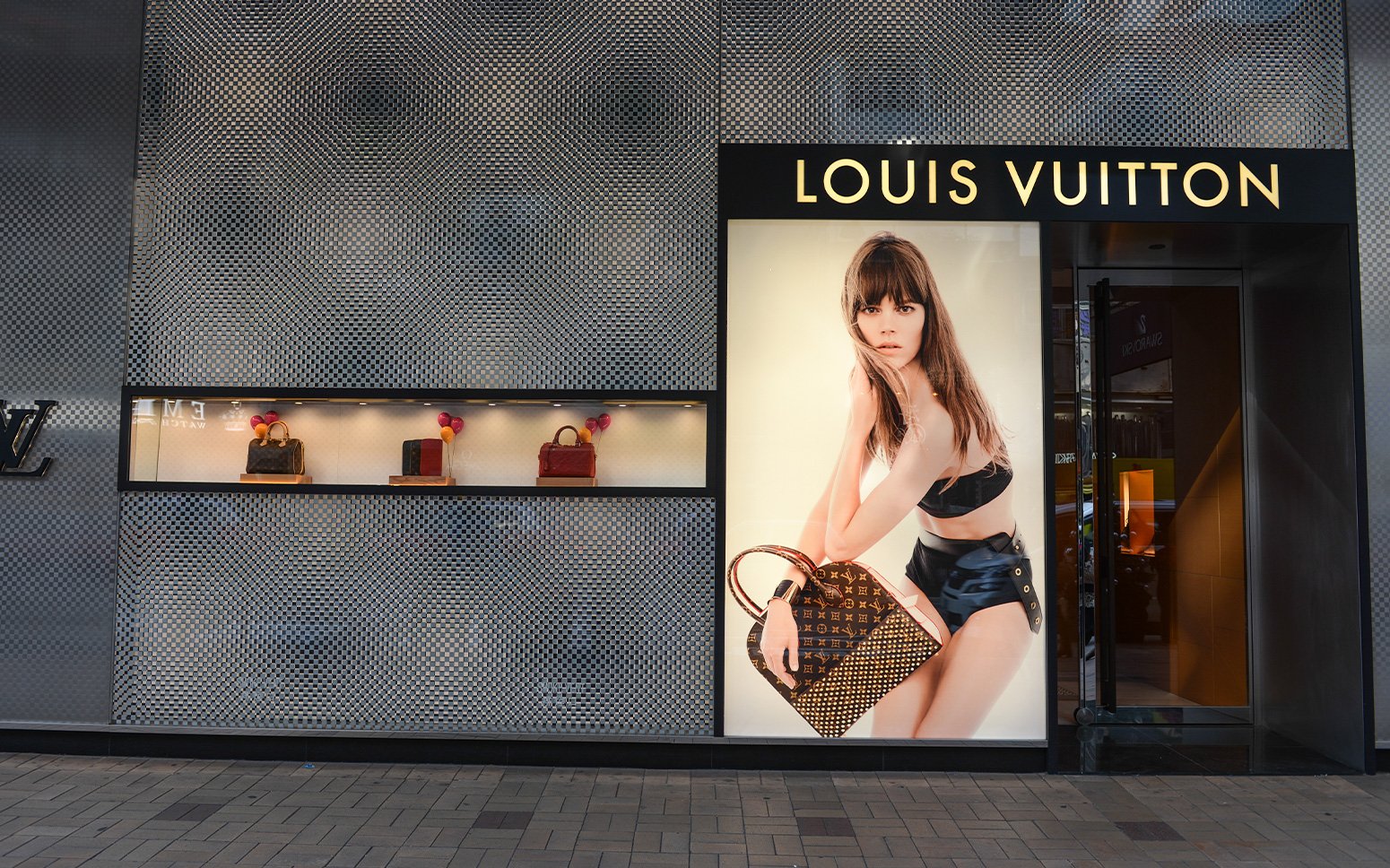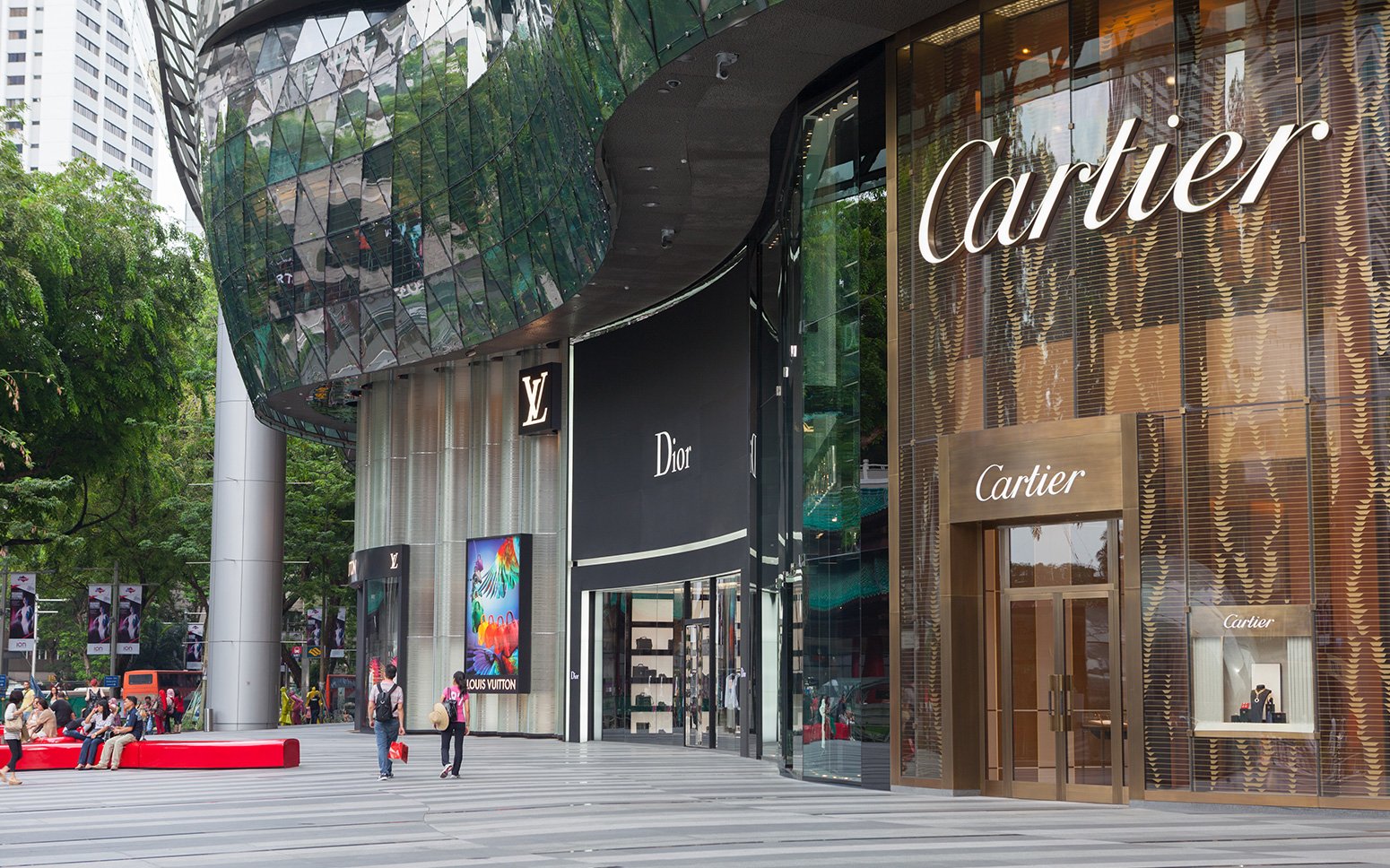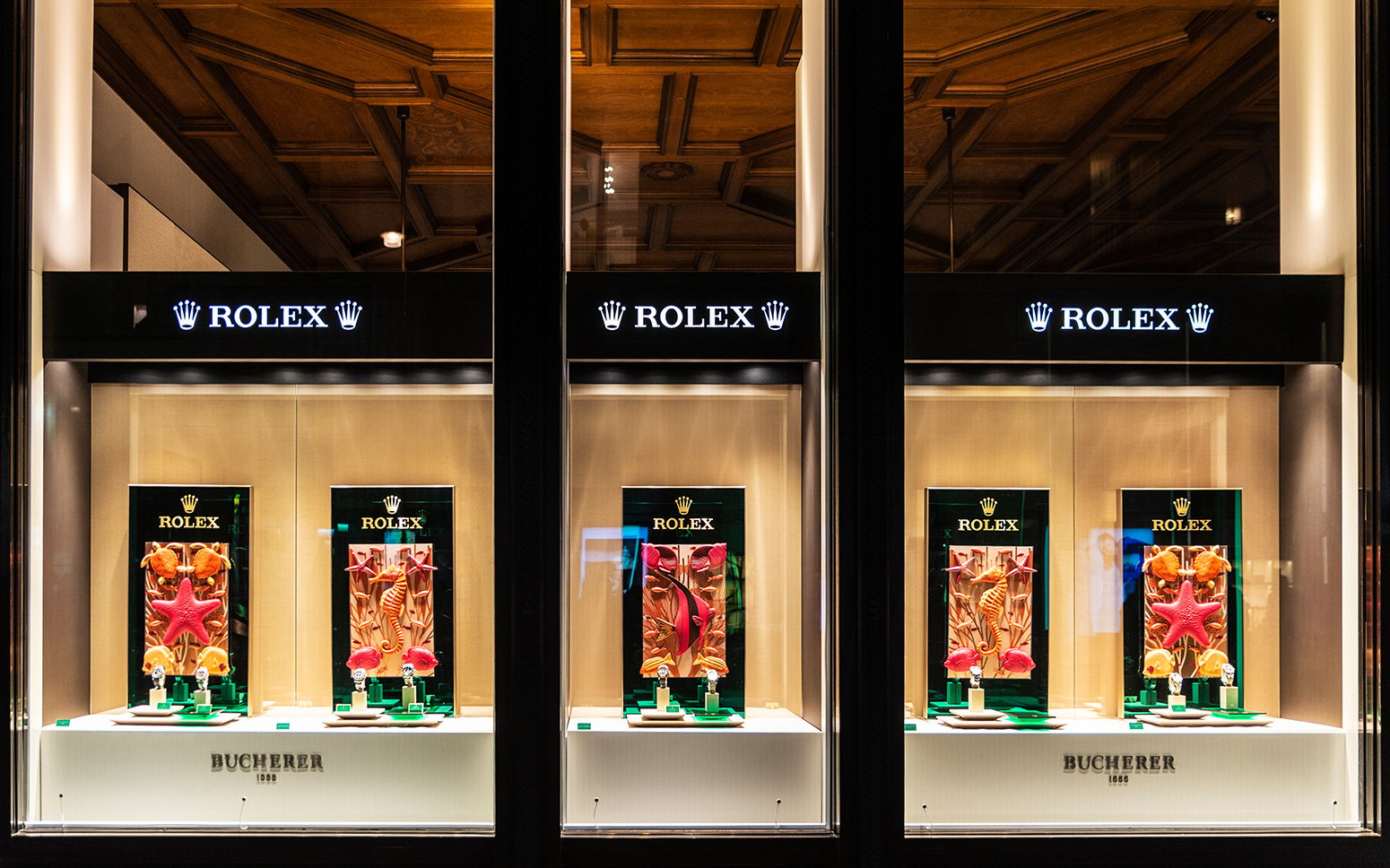Share this
Luxury Brands Struggle with Product Quality
by Surefront on May 5, 2023 8:48:34 AM
Home > Blog > Luxury Brands Struggle with Product Quality
Table of Contents
- Luxury consumers are shockingly loyal
- How to produce just the right number of luxury goods
- Here’s looking at Louis Vuitton
- Luxury consumers still aren't trading down
- Luxury companies are pro-environment out of necessity
- Millennials are leading the charge
- A luxury brand by any other name...is fast fashion
- What is the #1 weakness of luxury brands?
- Luxury market growth and challenges
- Has luxury lost its meaning?
- New luxury strategy: Get back to quality
- Let's get digital, digital
Global inflation has luxury companies in a challenging limbo. The annual inflation rate in the U.S. was around 5% last year, following a 6.5% rise the year prior and a 7% hike in 2021. Middle and low income consumers are struggling to pay for even the most basic goods.
In this environment, a product’s bottom line value proposition –– quality and durability –– have to mean more to customers than buying goods from a luxury brand, right? Not necessarily.
Let’s take a look at the current state of the luxury industry and why so many luxury brands struggle to consistently produce quality goods. We’ll also look at which factors luxury brand leaders can double down on to justify the high price tags of their inventory.
Luxury consumers are shockingly loyal
Many luxury brands aren't being impacted by the recession in expected ways. You'd think luxury brands would be one of the first to be negatively impacted by a global recession. But consumers haven't behaved like analysts expected. Sales have steadied and the global luxury market is still in high demand.
While luxury shoppers are as determined as ever, the reasons they buy from luxury companies and what they look for from luxury goods has changed. At the same time, the challenges being faced by each unique luxury brand have intensified.
How to produce just the right number of luxury goods
We've talked before about how luxury brands struggle to increase their products’ speed to market. But the main challenge faced by most luxury brands isn't selling luxury products... it's producing them. Luxury consumers aren't going anywhere, but creating quality luxury goods to meet consumer demand?
That's the challenge. Factors like small batch production schedules and scrambling to source quality raw materials in the face of global scarcity don’t just create logistical challenges –– they also make it difficult for luxury brands to retain product quality.
Here’s looking at Louis Vuitton
So, how are luxury brands managing the supply chain shortage? Let's use the Louis Vuitton supply chain as an example. Louis Vuitton became a household luxury name decades ago, but brand leaders struggled to optimize their supply chain in an e commerce world that's hyper focused on digital experiences.
To underproduce luxury goods or to over produce luxury goods, that was the question. Luxury leaders at Louis Vuitton chose neither, opting to deploy a demand-driven, inventory-based supply chain management solution. By strategically implementing this system, Vuitton was able to begin producing exactly the right amount of luxury product for consumer demand. The result? Vuitton reduced inventory levels by 30% and improved delivery times by up to 50%.

Luxury consumers still aren't trading down
Luxury brands feel the squeeze from low-priced brands offering goods of a similar quality to luxury products, without the hefty price tag. The growth of low end retail would be detrimental to the high end brands, if it weren't for most luxury purchases being made by consumers in a better economic situation than other verticals –– such as mid tier apparel or discount home goods.
McKinsey predicts that the luxury sector will continue to perform better than other industries, as the wealthy luxury consumer is less affected by inflation. The luxury sector's steady performance will be driven by Chinese consumers, who haven't faltered in their enthusiasm for recognizable, higher price tag goods.
Luxury companies are pro-environment out of necessity
Luxury consumer behavior has long been a head-scratcher for the rest of the world. However, the luxury consumer does have a few resounding expectations that need to be met to recruit new customers, achieve lasting customer relationships, and encourage repeat purchasing.
Remember when products’ sustainability and desirability were widely considered mutually exclusive? Today, sustainability is an indicator of high quality products. It’s what consumers have come to expect from luxury brands.
Even determinedly eccentric luxury consumers, whose behaviors have long deviated from the norm, now expect the luxury goods retailers they patronize to have transparent environmental practices. The vast majority of luxury shoppers are also concerned with the environmental impact of their prospective purchases.

Millennials are leading the charge
Younger consumers are keeping the luxury market afloat. The days when Baby Boomers were the solitary stakeholders are long gone. Millennial consumer behaviors and priorities are no mystery to luxury brand leaders. Yet the ratio of Millennial luxury consumers vs luxury consumers from other generations often is a mystery.
Consider that Millennials and Gen Z consumers drive 85% of global luxury sales growth in 2023. And a whopping 81% of Millennial luxury shoppers expect their luxury goods brands to have transparent marketing, while actively talking about their sustainability initiatives. By prioritizing sustainability (as well as the digital experiences, which we’ll talk about in a minute) retailers in the luxury market can reach their target audience.
A luxury brand by any other name...is fast fashion
Luxury brands typically manufacture small batch goods in order to maintain exclusivity. By their nature, luxury products waste less than mass-market products. Therefore they are considered inherently sustainable.
Luxury brands that use lower quality materials to produce luxury items still have a better consumer sentiment than fast fashion brands. That’s because luxury fashion has become synonymous with supply chain sustainability and product quality; while fast fashion is widely known to have a negative impact on workers and the environment.
Even fast fashion retailers like H&M, which have taken more steps towards sustainability than many luxury fashion brands, still face negative consumer perceptions based on their large batch production cycles and the labor conditions for factory workers. Sustainable development is one of the key pillars for luxury brands that need to withstand the test of time.
What is the #1 weakness of luxury brands?
Luxury brands have a few core weaknesses. Firstly, many struggle when creating the luxury experience in a digital environment. We mentioned earlier that Millennials and Gen Z – both digital natives – are propelling the majority of luxury sales growth in 2023. That means online sales.
However, it’s hard for luxury brands to recreate what customers have come to expect from luxury shopping with digital experiences alone. And, while digital marketing is an asset in recruiting new customers, it’s getting harder for luxury executives to impart the feeling of exclusivity and accessibility at the same time.

What is the #2 weakness of luxury brands?
Second, in the past few years, many consumers have tightened their wallets. While luxury brands hiked prices to keep up with supply chain challenges. Luxury brands haven’t lost their wealthy consumer base. However, many brands also depend on selling premium mediocre goods to maintain margins.
It gets complicated to maintain brand equity: if luxury brands don’t necessarily have a positive impact on the environment, if the digital luxury experience is equal to that of any mid tier brand, and if the materials and craftsmanship aren’t any better than those found at any department store, why should anyone pay the high price tag for luxury goods?
Luxury market growth and challenges
McKinsey reports the luxury market is expected to grow between 5 and 10 percent in 2023. The same market research shows that luxury industry growth will be driven by Chinese consumers (with sales projected to grow between 9 and 14%) and U.S. luxury consumers (with sales projected to grow between 5 and 10%). A strong e commerce strategy rooted in unique digital experiences is key for growing luxury brands.
However, luxury goods still have a long way to go: A growing number of luxury brands are producing direct to consumer runway shows, which means faster production cycles. Premium mediocre goods are on the rise. The secondhand luxury fashion and handbag market is growing at 4x the rate of mainstream luxury goods –– mostly driven by e commerce sales. All these factors combine to create a loss of brand equity across the luxury sector.
Has luxury lost its meaning?
So, has luxury lost its meaning? Many luxury brands face challenges justifying the price of goods and, in the digital marketing era, only a few luxury fashion companies have the ability to become household names. There's too much competition for luxury items. The meaning of luxury isn't even widely understood within luxury companies themselves, much less so in the broader fashion industry.
Brand identity and personal identity now go hand-in-hand. Many consumers look at a luxury brand as their vehicle for self expression. As such, luxury executives can focus on personalized services and partnerships with artists to build positive consumer sentiment for their luxury products in the years to come.
New luxury strategy: Get back to quality
The quality of luxury goods needs to be standardized. If not within the retail industry as a whole, then at least by the luxury brands themselves. Luxury brands that build their business models around craftsmanship need to optimize their supply chains to continue to provide that value proposition as their company begins to scale.
The luxury sector is still relevant, but luxury strategy has to change. Luxury companies face unprecedented challenges in remaining relevant and justifying higher prices to young consumers. Now is the time for luxury goods companies to justify their overall value by returning to the key principles of luxury.

Let's get digital, digital
To create the quality luxury goods that consumers have come to expect, brands need to focus on creating a business model built to manufacture quality luxury products, not just make margins. And, to do this, your luxury brand first needs the right software.
Dynamic digital experiences, uniqueness and authenticity will drive new luxury consumers to purchase. And craftsmanship will keep those entry level luxury consumers coming back, for life.
Unified retail software for the next generation luxury market
You don’t want your data to be siloed. Your company’s CRM, PIM and PLM solutions shouldn’t operate in a vacuum, either. Surefront is a unified product collaboration platform to power growth and ROI. Our patented PIM, CRM, and PLM solutions streamline the omni channel sales, merchandising and product development processes. By combining these essential functionalities, Surefront creates a single source of truth throughout your product lifecycle, sales and listing processes.
The results? Up to 150% more revenue per employee and a 40% shorter product development cycle is just the beginning. Try our 10x ROI calculator to see your company’s potential profits. Or, skip the noise and book a custom demo with one of our unified product collaboration management experts today. The retail industry evolves quickly and has a lot of moving parts. We do all of the research, so you don’t have to. Stay ahead of market fluctuations, trends and new features by subscribing to our Unified Product Collaboration Management Blog.
Share this
- PLM Software (33)
- PIM Software (32)
- Trending Topics (20)
- CRM Software (16)
- Apparel & Fashion (14)
- Supply Chain (6)
- Sustainability (6)
- Success Stories (5)
- Tech Packs (5)
- Catalog Management (4)
- Luxury Goods & Jewelry (4)
- Retail (4)
- Category Management (3)
- Data Import (3)
- Home Furnishings (3)
- PLM Implementation (3)
- Wholesale (3)
- Consumer Packaged Goods (CPG) (2)
- Cosmetics (2)
- Data Export (2)
- Health & Beauty (2)
- Industry Events (2)
- RFQ & Quote Management (2)
- Unified Solution (2)
- Consumer Electronics (1)
- Import & Export (1)
- Inventory Management (1)
- Line Sheet (1)
- Merchandising (1)
- Pet Stores (1)
- Purchase Orders (1)
- Report Builder (1)
- Textiles & Raw Materials (1)
- Vendor Management (1)
- White Paper or Case Study (1)
- November 2024 (1)
- October 2024 (5)
- September 2024 (6)
- August 2024 (2)
- July 2024 (1)
- June 2024 (3)
- May 2024 (4)
- April 2024 (5)
- March 2024 (3)
- February 2024 (2)
- December 2023 (4)
- September 2023 (2)
- August 2023 (5)
- July 2023 (3)
- June 2023 (2)
- May 2023 (2)
- April 2023 (4)
- March 2023 (5)
- February 2023 (3)
- January 2023 (5)
- December 2022 (4)
- November 2022 (3)
- October 2022 (4)
- September 2022 (5)
- August 2022 (4)
- July 2022 (3)
- June 2022 (1)
- May 2022 (1)
- February 2022 (1)
- January 2022 (1)
- September 2021 (1)
- May 2021 (1)
- April 2021 (1)
- February 2021 (1)
- December 2020 (1)
- May 2020 (1)